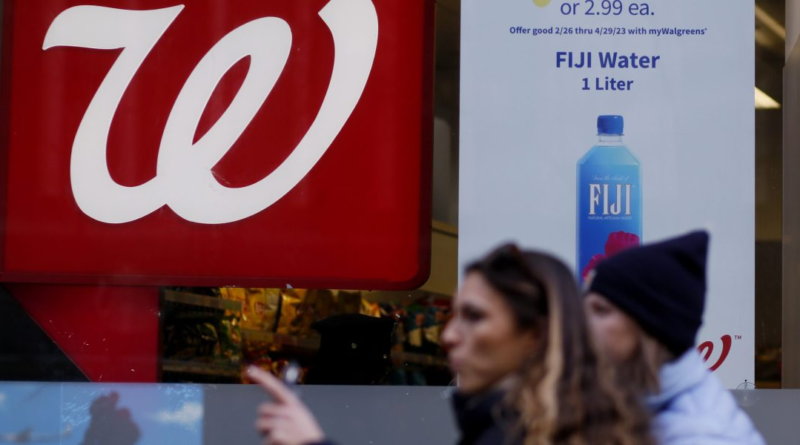Walgreens’ frail quarter goes beyond the discretionary spending dips afflicting its competitors. It’s ‘just not very good at retailing,’ analyst says
Pharmacy chain Walgreens posted better-than-expected earnings on Thursday, but analysts are not confident in its ability to recover from a challenging few years of decreasing demand for COVID vaccines and treatments and increased retail competition.
Walgreens beat earnings estimates, posting a 6.3% sales leap year over year to $37.1 billion, as well as a 3.4% earnings per share bump of $1.20. But the rest of the report tells the story of a more fragile company: It reported a $13.2 billion operating loss—$12.4 billion of which was a noncash impairment charge, or write-off related to its primary care provider, VillageMD, which plans to shut down 160 unprofitable locations. The losses prompted Neil Saunders, managing director of GlobalData, to call the earnings period “another torrid quarter.”
“While these things are technical adjustments, they underline the poor strategic decisions Walgreens has made over the past few years and its various misadventures in health care,” Saunders wrote in a Thursday note. “With the focus of the business firmly on driving profitability under a new CEO, Walgreens has had to take a very big step back from operations that it used to see as central to its future.”
Walgreens anticipated some of its struggles, particularly including an earnings hit from its February sale of $992 million in shares of wholesale drug company Cencora, which pushed the company to lower the top end of its full-year adjusted earnings per share from $3.50 to $3.35. The company hopes to save $1 billion over the course of the year. CEO Tim Wentworth—who took Walgreens’ helm last October after a tumultuous period of staff walkouts over poor working conditions—instead attributes Walgreens’ future challenges to the retail side of the business, which has struggled because of consumers’ unwillingness to buy discretionary items.
Walgreens reported 4.7% sales growth on the pharmaceutical side of the business owing to rising inflation and drug costs, but a 4.5% total sales decline on the retail side. Deloitte’s March ConsumerSignals report indicates that discretionary spending intentions are still below overall spending intentions, which have ebbed and flowed since recovery from the pandemic.
“We count on folks to come in and to not only visit our pharmacies, but come in, buy impulse items, get last-minute items, get seasonal items,” Wentworth told Bloomberg TV on Thursday. “A lot of those things are purchases that you have to get the value equation right on or else they feel discretionary to folks.”
Competitor CVS is having similar struggles. It, too, announced scale backs on primary care initiatives last fall after rising drug prices and a lessened demand for pandemic treatments slowed store traffic. Bankrupt Rite Aid, another drugstore chain, also closed a combined 1,500 stores. Plus, a weak respiratory illness season meant fewer people were buying tissues and over-the-counter medicine.
Retail strategy changes
To be sure, Walgreens has taken bigger swings to attract cash-strapped customers. A Walgreens spokesperson told Fortune that the chain is “responding to these market dynamics by making investments in key value items, and focusing our capabilities to engage with customers in a very targeted way.” Walgreens introduced 37 new store-brand products last quarter and is using stockkeeping unit rationalization to determine which products are more appealing to consumers.
While customers are buying general merchandise at Walgreens for convenience, they are going elsewhere to find bargains, Saunders said. Walgreens has particularly been losing out in the beauty sector, where customers are willing to spend more money, but are turning to competitors like Target and Ulta, which offer larger selections and lower prices. Walgreens isn’t lagging in retail sales because of shoppers unwilling to spend money, Saunders asserted. It is losing money because consumers are going elsewhere for better deals and products.
“Basically, Walgreens is losing out because it is just not very good at retailing,” he said.
But Wentworth doubled down on the importance of brick-and-mortar Walgreens, saying on Thursday that its customer service is what separates it from e-commerce giants like Amazon.
“We will beat Amazon because of the human interface that we offer in communities and neighborhoods,” he told CNBC.
Saunders told Fortune, however, that Walgreens is not known for its customer service, and because customers frequent Walgreens out of convenience, they often don’t require high levels of help.
“Walgreens’ view that this is an area of strength for the chain is a case of wishful thinking,” Saunders said.



